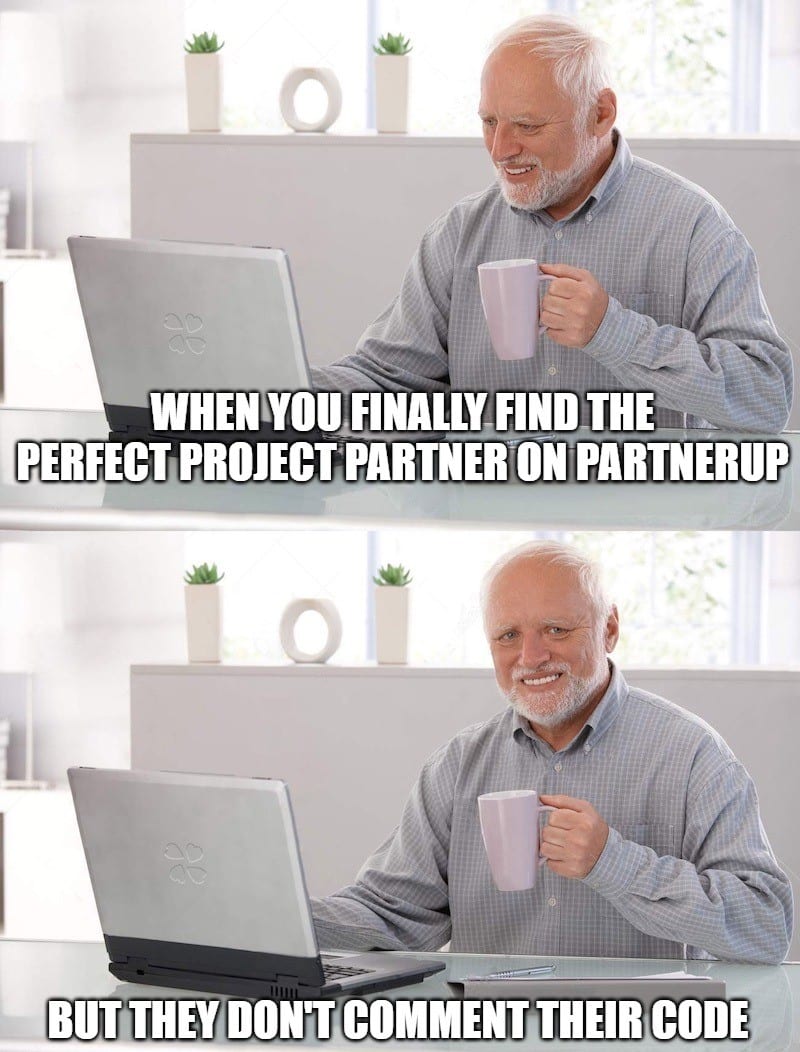In this blog post, I am excited to present PartnerUp, a web application I developed as part of my portfolio project for the ALX/Holberton Software Engineering Program.
Project Purpose
PartnerUp was created for the purpose of connecting ALX Software Engineering students, enabling them to find suitable project partners effortlessly. By providing a dedicated platform for students to connect and work together, PartnerUp aimed to enhance the overall learning experience and foster a supportive environment.
Timeline
The development process spanned 6 weeks, allowing me to immerse myself in the intricacies of building both the frontend and backend. The timeline provided me with the opportunity to thoroughly plan, design, and implement PartnerUp, ensuring a robust and polished final product.
Target Audience
PartnerUp was specifically designed for ALX Software Engineering students.
Personal Focus
As the sole developer of PartnerUp, I assumed the responsibility of both frontend and backend development. My personal focus revolved around creating a seamless user experience and a robust infrastructure to support the application's functionalities. I dedicated my efforts to ensure that PartnerUp was user-friendly, visually appealing, and responsive across different devices.
Project Inspiration
The inspiration for PartnerUp stems from my own experience as an ALX Software Engineering student. Throughout my journey in the program, I encountered the challenges of finding compatible project partners and witnessed firsthand the impact it had on the success of projects. Motivated by my own experiences and the desire to improve the collaborative experience for ALX students, I set out to create PartnerUp. I wanted to provide a dedicated platform that would empower students to connect with like-minded individuals, form strong project partnerships, and unlock their full potential.
Architecture
I have designed and implemented a robust architecture for PartnerUp that ensures seamless data flow and efficient functionality.
The architecture incorporates the frontend, backend, and database components, enabling smooth communication and interaction between the different layers of the application.
Technology Choices and Justifications
For the frontend development, I harnessed the capabilities of Bootstrap, Jinja, and jQuery to elevate the user experience in PartnerUp. While leveraging these powerful technologies, I ensured that the core web technologies such as HTML5, CSS3, and JavaScript remained at the heart of the project.
With Bootstrap, I effortlessly created responsive and visually appealing user interfaces, allowing PartnerUp to seamlessly adapt to different screen sizes and devices. By integrating Jinja, a templating engine for Python, I streamlined the process of dynamically generating HTML content. Jinja's robust features and syntax provided a flexible and efficient approach to rendering dynamic data, enhancing the overall performance and maintainability of PartnerUp. To enrich the user experience, I harnessed the power of jQuery, a fast and concise JavaScript library.
On the backend, I employed Python as the programming language and utilized the Flask web framework. Flask provided a lightweight and flexible foundation for handling HTTP requests, managing routes, and interacting with the database. Its simplicity allowed for efficient development, and I could focus on building the necessary functionality specific to PartnerUp.
In terms of data storage, I utilized MySQL as the backend database, leveraging its reliability and efficiency for storing and retrieving user information. SQLAlchemy, a Python SQL toolkit, facilitated seamless integration between Python and MySQL, ensuring effective data management and storage.
Key Features Implemented
User Registration and Authentication: PartnerUp enables users to create accounts and authenticate themselves securely. The registration process collects essential user information, which is then stored in the database for future reference. User authentication ensures that only registered users can access and interact with the application's features.
Partner Matching Algorithm: A crucial feature of PartnerUp is its partner matching algorithm. Leveraging the power of PyGithub, the application analyzes user repositories, commits, and coding styles to match ALX students with compatible project partners. This feature streamlines the process of finding suitable partners, enhancing collaboration and project success.
API Routes and Seamless Communication: PartnerUp provides a range of API routes that facilitate seamless communication between the frontend and backend. These routes handle user information submission, retrieval, and partner management, ensuring a smooth flow of data and functionality within the application.
Technical Challenges
As I delved into the development of the partner matching algorithm, I realized that accurately assessing the compatibility of coding periods and identifying relevant repositories would be crucial. I needed to devise an approach that could efficiently analyze and compare large volumes of code while considering various factors. The task at hand was to develop an algorithm that could handle (day/night) coding periods, effectively analyze repositories, and provide accurate partner suggestions based on compatibility. Additionally, I wanted to optimize the algorithm for efficiency and scalability to ensure smooth performance even with a growing user base.
I conducted extensive research on analysis techniques. I integrated Github API to fetch commit history from user repositories. This allowed me to gather information on the user's coding patterns, commit frequency, and commit period. This data served as the basis for evaluating compatibility with potential partners. To provide personalized partner recommendations, I utilized the random library to randomly select three potential partners from the database. This random selection ensured a diverse pool of candidates for consideration. For each selected partner, I compared their commit history with the user's commit data. By analyzing factors such as commit frequency, and coding period, I assessed the compatibility of their coding practices.
Through the combined use of Github API and the random library, I successfully implemented a partner matching algorithm that randomly selected three potential partners, assessed their commit history, and recommended the partner with the closest commit number to the user commit number. This approach ensured a fair selection process while considering the user's commit data and coding style preferences.
Technical Takeaways
Working on both the frontend and backend of the application has significantly broadened my technical skills. I gained a deeper understanding of frontend technologies such as HTML, CSS, and JavaScript, along with backend technologies like Python and database management. This hands-on experience allowed me to strengthen my proficiency in full-stack development and reinforced the importance of having a well-rounded skill set.
About Me
I have a diverse background that combines both design and development. Having previously worked as a designer, I bring a keen eye for aesthetics and a user-centric approach to my projects. I thrive on the intersection of creativity and problem-solving, leveraging my design background to craft meaningful and visually appealing software solutions. I am constantly motivated by the ever-evolving world of engineering and eagerly embrace the challenges and opportunities it presents.










Top comments (0)